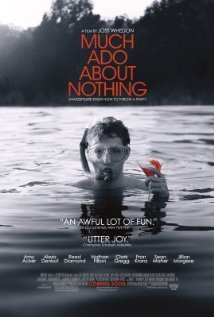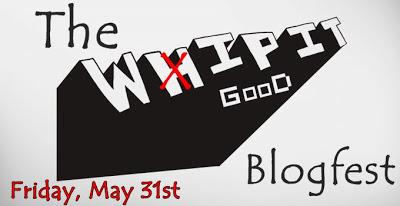Cate Morgan's Blog, page 20
July 6, 2013
ANNOUNCED: Brighid’s Mark (Epic FLAIL Warning) (#ROW80)
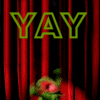 You may or may not have noticed some changes in ye olde Sidebar Widgetry, in the form of Statusy-type things. Go ahead, take a gander. I’ll wait.
You may or may not have noticed some changes in ye olde Sidebar Widgetry, in the form of Statusy-type things. Go ahead, take a gander. I’ll wait.
*twiddles thumbs*
Everyone back? Good. Now I can get THIS off my chest (ahem):
KEEPERS #2 HAS BEEN ACCEPTED!!
Which means I can take a moment from doing this:

To do this:

NUMFAR! Do the Dance of Joy!
Thank you, Numfar.
This is a BIG, BIG RELIEF because Keepers #3 has been simmering away for some time. It would have sucked mightily, y’all, to have Keepers #3 completed, and not have a contract in place for Keepers #2. Thank goodness for Editor Awesome, and Publisher Amazing, not to mention the much-smarter and infinitely better-looking Stunt Cate, BETA-reader extraordinaire. Here are the deets:
Title: BRIGHID’S MARK (Keepers of the Flame #2)
Genre: Urban Fantasy, Apocalyptic (with romantic elements)
Setting: New Orleans
Length/Format: Novella, e-Book only (all electronic formats)
Publish Date: April 29, 2014
Publisher: Samhain Publishing, Ltd.
Synopsis (author version):
Callie Trevelyan, Keeper of the Flame, has a reputation as a highly effective demon hunter. So it comes as no surprise when one of her teammates calls in an SOS from New Orleans–city awash in tourists, floodwaters, and Voodoo (not to mention rum). What does come as a surprise is the news that her mentor has been murdered.
Liam Byrne isn’t certain how, exactly, he ended up in the Crescent City two or so centuries ago with mysterious markings on his arm and chest. But in the city he stayed, protecting people against its myriad supernatural threats and answering the occasional summons of the Loa. When he witnesses Eva’s murder at the hands of a Greater Demon, even Baron Saturday can’t prepare him for Callie and Company descending upon his city and taking over his life.
What Callie doesn’t understand–beyond the fact that Liam is Marked, like her, as a champion–is why Eva died at all. Keepers of the Flame aren’t so easy to kill, after all, and Callie has the scars to prove it. Their hunt for the demon and the truth behind Eva’s missing soul leads them on a Crossroads journey leading to Otherworld politics, betrayals, and, eventually, each other.
But the Demon, servant of Lillith, patiently awaits Callie’s arrival on the field of battle. Callie is ready and willing–there’s just one problem: Brighid’s Flame, the source of her power, is every bit as missing as Eva’s soul. And as the full truth unfolds, Callie knows she’s in for the fight of her life.
If she’s lucky, winning will cost her everything. If she’s not, then she’ll sacrifice it all only to lose it all–Liam, the city itself, and possibly all of humanity in the End of Days.
They’ve only got one chance, and everyone’s rolling the dice.
Product Warnings: Contains demons (Great and small), a kick-ass heroine who doesn’t bother with names, broody demon hunters, no small amount of sexual tension, tricksy Loa, rum, Vodoo, Crossroads bargains, vengeance, betrayal, and the first signs of the apocalypse.
What’s Next for Brighid’s Mark:
This is one of my favorite parts of the process, second only to the writing itself. With the electronic ink drying on the contract, all official-like, it’s time to begin the production process. Which means:
Production packets for Publisher Amazing: “Jacket” copy (basically the Publisher’s version of the above synopsis), all the necessary marketing and publicity information about the story, the series, cover art ideas (YAY!), author bio, etc.
Editorial Edits (for overall content, made by Acquiring Editor, aka Editor Awesome)
Line Edits (for continuity, made by Line Editor, aka Editor Eagle-Eye)
Copy Edits (for formatting, made by Copy Editor, aka Editor Diligent)
Aforementioned Cover Art (YAY!!)
ARC Glory (and yes, there WILL be a chance to obtain review copies in .pdf/.epub)
And More! To Come! SOON!!
Did I mention COVER ART?! YAY!!!
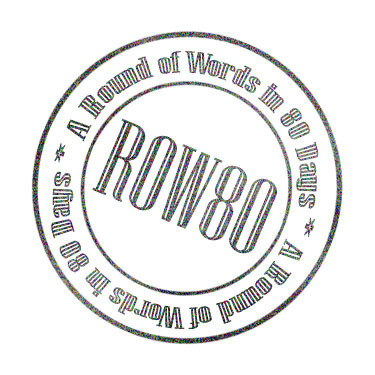 What This Means For My Production Schedule:
What This Means For My Production Schedule:
June saw the completion of Big Dang Projeckt–Act One (Rough Draft). FINALLY. That being said, I’ve much to contend with in July. To whit:
IN PRODUCTION (Exhibit A): Keepers #2. This is my first priority–which also entails keeping you, dear readers and fellow Word Wranglers, up to speed on the process.
Drafting (Exhibit B): Rough Draft of Waking Muse #1. I don’t know if this series will end up being placed with Samhain, but I surely hope so. I fully intend to keep sending them my madcap scribblings until they cry Uncle. Yanno, like that kid in The Christmas Story who ended up doing porn.
 ANYWAY my goal on this is 1K words a day, with time off for good behavior.
ANYWAY my goal on this is 1K words a day, with time off for good behavior.In Revision (Exhibit C): Keepers #3.
My revised (again) 2013 Production Schedule is published on its own page for your convenience. *hugs*

Me, but more awesome, because it’s Jeremy Renner


July 2, 2013
Author’s Log: Gotta Love It (#IWSG)
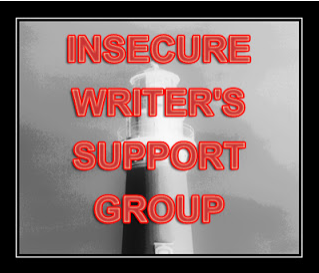 I’m so incredibly grateful to be doing this whole writing gig. It settles the madly bouncing voices in my head, and once one story’s put to bed I have about thirty others worth exploring, with new ones popping in for a visit all the time. (It is very, very busy in my brain. Seriously, it’s like a Grand Central Station populated by Sonic Hedgehogs in here.)
I’m so incredibly grateful to be doing this whole writing gig. It settles the madly bouncing voices in my head, and once one story’s put to bed I have about thirty others worth exploring, with new ones popping in for a visit all the time. (It is very, very busy in my brain. Seriously, it’s like a Grand Central Station populated by Sonic Hedgehogs in here.)
I’m learning things every day, it seems–about the art and craft in general, and about my own skill level in it. And I’m thankful for every single lesson, because it makes me better. This month I’ve started drafting a quieter piece, with no big-budget action to speak of. No explosions, no demons, no wrassling with the Powers That Be and impending apocalypse. This is way out of my comfort zone, so I’m going to need every trick up my sleeve and then some. It’s a place that’s uncomfortable and invigorating at the same time.
As a wee theatre geek back in high school, I had the rare privilege to work with a Broadway veteran as my theatre director. She was in the original Rocky Horror Picture Show on Broadway as a Time Warp dancer, and performed as a dancing zombie in Michael Jackson’s “Thriller” video. Those of us in the advanced program thought we were totally going to New York or LA to become Big Stars. (I, personally, was going to join the cast of Cats.) Natrually, about–oh, 98%–of us were wrong. Here’s the irony: about the same percentage of us hated to audition. HATED IT. After all, most of us auditioned to get into the advanced program to begin with, a few (like me) were scouted from elsewhere like show choir, the basic program (I came in after a semester of Stage Crafts 101), etc.
Here’s the moral lesson: those who loved to audition got the best roles, and it showed. My boyfriend, for instance, had his chosen part’s lines–indeed, the entire play–memorized by the time auditions came around. He’d already invested in deep character work, and trained himself into the role he wanted for weeks ahead of time. He prepared for an audition like one would a marathon. He was amazing. Now? He’s in Brooklyn performing and writing his own award-winning plays Off and Off-Off Broadway. Because he loved to audition.
Me? I did all right–character roles, lead dancing, supporting comedic parts. As it happened, I was good at auditioning, which I found out later when I missed some really good parts by mere inches. Now I know if I’d learned to love auditioning, I would have nailed them to the wall like a bad toupee.
The reason we had to learn to love auditioning, our director told us, is because we’re going to get rejected. A lot. Sometimes, without even opening our mouths.
Talk about a bucket of ice water over the head. Yee-owtch. So much for our delicate 16-year-old egos.
Writing is the same way. Sending out query packages and manuscipts is the Word Wrangling way of auditioning. And just like auditions, querying is going to result in result in rejects. A lot of ‘em. Sometimes within the first couple of sentences. Therefore, love to query. Love to throw caution to the winds, stop thinking about doing it, and just do it. Fear no agent or editor.
Why? It’s all subjective anyway. You’re not supposed to take a reject personally–someone out there is going to love what you’re doing, you just gotta do your homework to narrow the field (and the odds) of finding that one person. If you don’t get one story off the ground, well, there are other stories out there.
Once Mrs. J. dowsed us with ice water, she didn’t just leave it at that. She taught us the fine art of the audition, helped us build a portfolio of characters and techniques, video taped us–in short, she taught us to take the guesswork out of the process, so we could shake loose and learn to enjoy it. As soon as the joy came, so did the parts because we’d learned to leave our baggage outside the theatre and, unhindered, let our personalities soar. Believe me, the joy shows. It becomes your voice.
Do your homework. Do the very best that you can. Craft and polish and learn everyday, especially from mistakes. Not everything will work, but learn to recognize what does and what doesn’t and, above all, WHY.
Learn to love it.
Insecure Writers Support Group


July 1, 2013
Author Watch: July 2013–Updates, and Other Shenanigans (#ROW80)
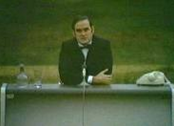 And now…for something completely different.
And now…for something completely different.
So I was planning something completely different for July’s Author Watch post. I mean, there was news and EVERYTHING. There is still News, mind you, however I’m not allowed to share it yet. So I sit here like a boiling pot, in danger of exploding all over the Internetz. Because by the time I get the green light to share said news…well, it’s going to be violent and messy. Like, Gallagher messy. Sorry.
So. Ummmmmm….. *twiddles thumbs* *crickets*
Oh, hey–I know! How about some Goals, and Other Updates As Well:
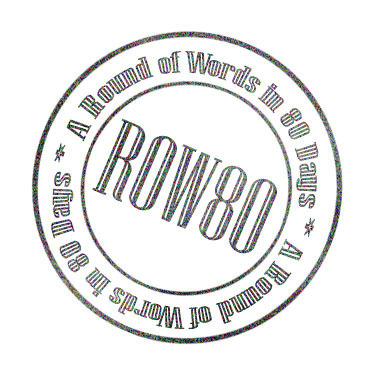 Today is Day One/Official Goals Day for Round 3 of A Round of Words in 80 Days–a writing community of encouragment and support. (If you’re one of my many, lovely non-Word-Wrangling readers, feel free to skip this bit.)
Today is Day One/Official Goals Day for Round 3 of A Round of Words in 80 Days–a writing community of encouragment and support. (If you’re one of my many, lovely non-Word-Wrangling readers, feel free to skip this bit.)
My goal is pretty straightforward, mainly because it worked so well in June: 1,000 words/day. This will put me in line to writing around 30K per month–that’s an entire novella or 1/3 of a novel. Sweet!
Here’s the best part: Every word I write over my daily alottment goes into a “Word Pool”. When that Word Pool accumulates 1,000 words I get a day off! W00T! Of course, it works the other way, too–if I miss my goal, the difference comes out of my word pool.
It worked really well, you guys–I broke 30K on Big Dang Projeckt–which means I’ve completed Act I! YAY!! (I’ll update my word count and status for my sidebar later tonight.) Word count and status updated!
A couple of things here–I’ve posted my production schedule for 2013 on its own page for your convenience. Of course, this is subject to change at almost any moment, but for now that’s what the rest of 2013 looks like for me. I can’t believe the year is already half over!
This month the drafting part of my production will be concentrated on a rough draft for Waking Muse #1, tentatively titled Lady Tennant, after the Stradivarius violin. After watching The Red Violin I was inspired to write a love story surrounding one of the named Strads, so that’s my next story–completely different from my Keepers of the Flame series. What can I say–I like to keep things lively!
Speaking of Keepers of the Flame, my revisions this month will be focused on Book 3 now that Book 2 is *mmph mmph gurgle koff mmph*. Once revised, deconstructed, and reconstructed with infinitely more elegance than currently displayed, I’ll send it out to Beta Reader Extraordinaire, Stunt Cate (the prettier, wiser, smarter me). A lot of writers don’t like the revision process, but I LOVE it. I get to engage the evil, logical portion of my brain that likes to build things stronger, faster, better than before and craft something really special.
Speaking of things really special, the Tech Monkey and I found Joss Whedon’s Much Ado About Nothing in the wild (which wasn’t easy), and enjoyed it immensely. Most of you know j’adore Joss Whedon and Shakespeare in equal measure, so the experience for me was nothing less than a little less than two hours of SQUEE and GLEE and all things ending in EEE!!!
So beautifully crafted and acted, y’all, and totally approachable for mainstream audiences. The ninja slapstick had me in stitches, as did Nathan Fillion’s Dogberry. Sean Maher was downright creepy as Don John, and played the limited-time role to a turn, Fran Kranz turned in a wonderfully naive Claudio, and Clark Gregg was superlative as Leonato. There was a lot of layered conflict in here, well worth studying on its own merits beyond sheer enjoyment.
It also served as a reminder, thanks to the Tech Monkey’s presence, that anything a Word Wrangler presents for a paying public has, at the end of the day, got to ENTERTAIN. Unless, perhaps, if you’re creating for the sole benefit of other Word Wranglers. (And even then, as a Word Wrangler, I still want to be entertained, even if I’m simultaneously appreciating the crafty elements, which only enhances the experience for me).
So that’s the news, as it stands. There will be more, epic news later this month, at which point I’ll hand out hazmat suits for the more squeamish. Happy July everyone!!


June 24, 2013
Man of Steel: The Good, The Bad, and The Ugly
 So the Tech Monkey and I went to see the Sunday matinee of Man of Steel yesterday. With all the bloggity-blogging I’ve been doing about story structure, I thought I might take this opportunity to use Superman as an object lesson for something other than how to tie on a towel-cape so it stays on and flutters dramatically. (Come on. We all did it.)
So the Tech Monkey and I went to see the Sunday matinee of Man of Steel yesterday. With all the bloggity-blogging I’ve been doing about story structure, I thought I might take this opportunity to use Superman as an object lesson for something other than how to tie on a towel-cape so it stays on and flutters dramatically. (Come on. We all did it.)
First, the Big Question: Did I like it?
Yes, yes I did.
Well enough to buy the DVD when it becomes available?
Um, no. Sorry. It got my Theater money, but I didn’t like it enough pay for it again. If it ends up on Netflix Instant Play, however, I’d give it another viewing. Some movies hit me better the second time around, on a smaller screen. It was like that for me with The Hunger Games–I enjoyed it on the big screen, sure, but I liked it better the second time ’round on the ‘Flix.
This isn’t really a review, just some observations about what worked for me, and what didn’t, because that’s how Word Wranglers learn. That being said, there are very few movies I can watch without viewing them with a critical eye–not critical as in “You’re Fat, And Your Momma Dresses You Funny”, but critical as in keeping a beady little Infernal Editor eye on “How It’s Done.” Then again, I suppose my Infernal Editor can be equally critical in both areas, which is why I’m so well-armed. Well, that and the Zombie Apocalypse.
BRING IT ON.
Ahem.
Do not fear, there are no Spoilery Bits Afoot.
The Good (What Worked)
The changes to Clark/Superman’s character. It is so much more believable to think he was hiding off the grid than working as a news reporter with the Magical Cloaking Device Glasses. I can understand the average citizen not knowing, but Lois? A Pulitzer Prize winning reporter? Wouldn’t that make her, yanno, observant or something? Also, love that this Clark was raised as a pacifist because of the consquences his later actions cost him. Love the dark stuff here, and the impact it has on him. Anyone looking to beef up their character development technique and how to execute it needs to at least rent this movie or catch it on the ‘Flix for that reason alone.
Amy Adams as Lois. FINALLY, a likable Lois. Strong, heavy-hitting reporter who supports her man because it’s his damned movie and is not in any way annoying. She was the perfect foil for Henry Cavill. Also–The Kiss was well-timed, well-executed, and verily awesome.
Henry Cavill in the title role. He’s one of those quiet, nuanced actors I like who saves the Big Emotions for when he needs it. He does the broody-but-not-a-jerk so well, and it takes an actor with craft who can convey whole layers of of subtext without saying a word.
The direction they took with Zod. Instead of Evil Bad Guy wearing black and doing Evil Stuff simply because we’ve got nothing else to do that day, we get an Antagonist with Motivation, and a sympathetic one at that–something that can be difficult to pull off. The Antogonist with Sympathetic Motivation is something I’m driving for in leveling up in my own craft.
The Bad (What Didn’t Work)
THE NOISE. LOUD. OMG LOUD. SO VERY VERY LOUD. OW OW OW. Serious sound editing issues on this one. I know it was sound editing and not the theater because a) we always go to this theater, and have never had issues before–say, withIron Man 3; and b) if the theatre had dropped the audio down a level we would have missed half the dialogue, especially since Henry Cavill is so soft-spoken. This isn’t a structural or story-telling thing, I know, but it SO needs to be said, because it completely ripped me from the story. So a word to the wise–if you’re writing action, less is more. DO NOT overwhelm your audience with sensory overload–give them something to focus on that keeps them anchored during all the Big Bada-Boom.
OMG the Big Bada-Boom. For someone looking to save the entire human race, Superman sure did destroy an awful lot of it in the process, what with the collateral damage and all. I know this expected for a comic book movie, but there is such a thing as complete overkill. It got way over the top–had I been Superman with the red swirly cape and all, I’d have drawn the enemy into space for the fight, closer to the sun where I’m stronger (an aspect of the established conflict) and less likely to cause the Explosion Apocalypse. Raised as a pacifist, remember?
The Ugly (Epic Fail)
Pacing, or lack thereof. There was no structure to this thing, as far as I can tell. In fact, it looked like two related but separate movies told by different storytellers. Seriously, you cannot have your Inciting Incident 30-40% through the movie. OMG, the extended Setup. Really, REALLY extended. It draaaaaaaaaaaaged. If I hadn’t had Henry Cavill to ogglify I might have fallen asleep after awhile. This was made worse by the fact once the movie FINALLY started the POV kept bouncing into to flashback in the midst of some really exciting bit. Highly distracting.
What resulted from the extended setup is that once the movie did start (seriously, I cannot over-hammer home the point about the Longest Prologue Evar), it was jarring. It went from a quiet montage of character development and backstory to a starting pistol firing off all the action–which consisted of most of the rest of the movie–and all the sensory overload mentioned above. It was as if they hired the guy who did The Hours (Stephen Daldry) for one movie, Michael Bay for his version, stuffed all their film into a turbo-boosted salad shooter and aimed it at the screen. Both were equally valid, and vaguely related, but still two separate movies.
So there you have it–my Word-Wrangling observations on Man of Steel. Have you guys seen it yet? What did you think? If you haven’t seen it, are you planning to?


June 22, 2013
Author’s Log: The Journey’s The Thing
 The thing about this whole writing gig is that once you understand and start practicing the underpinnings of plot structure, you tend to see it EVERYWHERE. You can’t help it. The Tech Monkey and I will be watching a movie, and all the while he’s enjoying a well-crafted plot twist, my inner narrative-casualty freak flag starts waving loud and proud. The consequence of this is that I have a fairly good idea about what’s going happen, simply because it must happen, based on where in the plot incline we are.
The thing about this whole writing gig is that once you understand and start practicing the underpinnings of plot structure, you tend to see it EVERYWHERE. You can’t help it. The Tech Monkey and I will be watching a movie, and all the while he’s enjoying a well-crafted plot twist, my inner narrative-casualty freak flag starts waving loud and proud. The consequence of this is that I have a fairly good idea about what’s going happen, simply because it must happen, based on where in the plot incline we are.
TM: How could you possibly know….
WM: *shrugs* It’s Midpoint. Everything changes.
TM: ?! o.O
Yeah, so…everywhere. As you can imagine, this makes me LOTS of fun to go to movies with.
That being said, I still watch it to see it done well. I imagine this is how magicians watch their counterparts—with an eye for the well-crafted and subconscious consideration as to how they would do it.
But story is so much more than just plot. Story is mostly about character. People. Events aren’t the only things that change with every uptick on the ol’ plot barometer. It’s important that characters are changed by them, too; otherwise, they’re in danger of flat lining.
And if the characters flat line, well…bust out the paddles, ‘cause the story’s in danger of dying, too.
I approach a character arc a couple of different ways, depending on the project. This doesn’t mean I’m focusing more on character and less on plot (or vice versa), it just means I’m focusing differently. There are a couple of classic arcs to choose from:
• The Mythic Journey–1.) The protagonist leaves home (Departure); 2.) Crosses a threshold into Another World (Initiation); 3.) and Re-enters from Another World, returning home (Return).
• The Heroic Journey—1.) Cage (an inner conflict that restricts); 2.) Escape (action motivated by the restriction); 3.) Quest: Internal conflict meets and reacts to external conflict, or, as I like to refer to it, The Road To Perdition; 4.) Dragon (Collision of forces or Good vs Evil–where the metal meets the meat); and 5.) Home (the reward).
If a story’s going to be action-oriented with the primary conflict being external, like Keepers of the Flame, then I tend to go with the Heroic Journey. However, if a story’s going to be more character-driven with the primary conflict being internal, then I’m more attracted to the Mythic Journey. Neither is wrong or right, it just depends on personal preference. For instance, Big Dang Projeckt follows the Heroic arc, but Waking Muse #1 utilizes the Mythic.
Hey, how ‘bout some examples of each arc? YAY, POWERPOINT!!
*Power Point Dance*
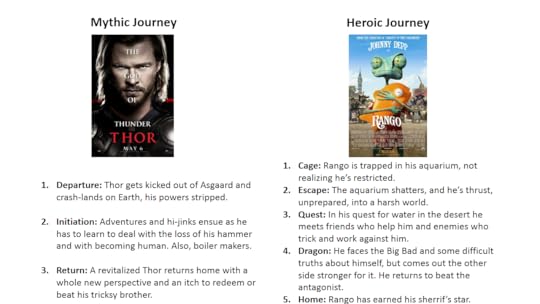
Interesting enough, Thor also follows the character journey of The Descent of Innana, who journeys to the underworld and is stripped of all her powers, weapons, and armor until she grows and learns enough wisdom to wield them again.
Once I have my character arc points outlined and placed next to my plot incline, I make a handy-dandy spreadsheet, because I’m now going to outline my entire character arc for my protagonist. On said, handy-dandy spreadsheet, I use the first column to spell out the events of each of the nine plot points on my incline. In the next column I’m going to map out my character journey, either Male or Female.
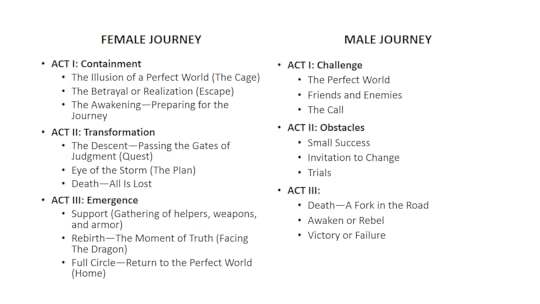
Whether a character takes a Female Journey or a Male Journey has little to do with gender. For example, Thor takes a Female Journey, and at the end of the movie invites his brother Loki to change and begin his own journey–which Loki denies. In Keepers 2, my protagonist Callie takes the Male Journey, and in chosing to awaken instead of rebelling might win or lose her final battle–and at what cost?
At the end of all this plotting and spiritual journey, I now have a fully developed outline of nine blocks that more or less equals a rough draft. I know what I have to write and when, because my story is already–more or less–written.


June 15, 2013
Author’s Log: The Plot’s The Thing
 Okay. I’ve got my characters. Time to build my stage–after all, what are players without a stage to swan around on? (Answer: Mimes. Perhaps performance artists. But let’s not get too silly with the metaphors, hmmmm?)
Okay. I’ve got my characters. Time to build my stage–after all, what are players without a stage to swan around on? (Answer: Mimes. Perhaps performance artists. But let’s not get too silly with the metaphors, hmmmm?)
Sidenote: Shakespeare had a rather wicked sense of humor, chock full of groaners. I think of him as the Eddie Izzard of the Elizabethan age. Seriously, Shakespeare’s theatre in London was called The Globe…BECAUSE ALL THE WORLD’S A STAGE! Get it? Get it? *jab jab*
First I have to build my scaffolding–the architecture upon which my story hangs. Leonardo DaVinci and Dali didn’t just slap the paint onto the canvas–they didn’t even start with an underdrawing first. They started with a grid. The grid allowed them to keep things balanced, in proportion, and in perspective. What it also does is help ensure resonance, which is something you definitely want your audience to feel as a creative individual. Resonance is what makes your work “speak” to them.
Architecture, structure, framework–whatever you call it, you need a toolkit, safety goggles, and bandages.
Hey, those papercuts can bleed like a sieve.
I build my story structure–or blueprint, if you will, on a white board. My white board has a template already sketched out in gaffer’s tape (aka electrical tape–yeah, my husband looks at me weird, too). The diagonal, horizontal line markes the escalation of events from Opening Scene to Closing Scene. Key plot points are marked in smaller, vertical lines along the horizontal one. Some of you may recognize this as Aristotle’s Incline, and it looks something like this (YAY, Power Point!):
These are the all-important, must-have scenes or scene sequences that are the milestones of my story. For a novella like one of my Keepers of the Flame stories, the entire manuscript will be made up of nothing but key scenes and sequences, due to the limited word count. I use a classic three-act structure, where ACT I ends at Plot Point 1, and ACT II ends at Plot Point 2. The percentages help me keep pacing under control. So, whether I’m writing toward a goal of 30K or 90K, my Inciting Incident has to come at about the 10% mark (3K or 9K, respectively).
Let me iterate: THIS IS NOT A FORMULA. Formulae are for SPREADSHEETS, of which I am very, very fond. This is structure. Dali and Da Vinci both used a grid as their underlying architecture before they let a pencil or paint brush anywhere near a canvas. Yet, their paintings were very, very different. And there are few things less formulaic than a Dali painting–a Tarantino film, for instance (who also mastered story structure before he started messing with it).
I guess what I’m (finally) getting at is that plot is not story. Plot is what happens to characters, story is about how it changes them, how they act and react. In other words, story is the chain reaction resulting from plot.
Plot is the craft of writing, story is the art.
Now I begin my under drawing, which means I’m going to sketch in my milestones. These are my big-ticket set pieces. Again, I’m also looking to create resonance through balance and mirror images, so when I draft, I write my key chapters first, and out of order.
Take Big Dang Projeckt, for instance. My opening scene takes place on a ship, at night, in fog, right before a shipwreck. The destination is my hero’s hometown. The closing scene takes place on a ship, at dawn, in fog, right after a big sea battle. The destination is my titular character’s home. They both represent a new beginning for my hero, something my audience can easily relate to. Resonance.
Here’s the order of events for my rough draft process:
Opening Scene and Closing Scene
Inciting Incident and Climax
Plot Point 1 and Plot Point 2
Pinch Point 1 and Pinch Point 2
Midpoint (Everything Changes!)
I couldn’t do this without a structure in place–a map to follow. Once I have a very rough draft of each scene in place, I develop them into chapters–usually scene sequences of three scenes a piece. For a novella, this will usually give me most or all of a rough draft. For a novel, about 1/3 of a rough draft. YAY!
For a novel, I’ll then break my novel into three chunks to tackle, one for each Act, and those chucks get broken into smaller, more manageable chunks, to fill in the connective tissue between each key chapter.
Okay, time for you to chime in! How do you plan and execute the beginnings of a new project?


June 4, 2013
Author’s Log: It’s A Trap! (#IWSG)
 Infernal Editor, here. Cate’s off in the corner, muttering epithets over her rough draft of Big Dang Projeckt, so I’ve knicked her blog while she’s distracted. Really, all I did was point out the fact her beloved hero was getting a mite whiny for his britches, and she banishes me. The nerve. *harumph*
Infernal Editor, here. Cate’s off in the corner, muttering epithets over her rough draft of Big Dang Projeckt, so I’ve knicked her blog while she’s distracted. Really, all I did was point out the fact her beloved hero was getting a mite whiny for his britches, and she banishes me. The nerve. *harumph*
Most folks have an angel and devil perched on either shoulder, acting as their conscious. Creative people, however, have a Divine Muse and Infernal Editor instead. Right now Cate’s Divine Muse is sitting atop her laptop monitor, looking concerned and shooting me dirty looks. HA.
An Infernal Editor’s job is to seed doubt until it blossoms into fear. Some of us are so good we can even make creative types fear success. Here are just some of the many services we offer:
Writer’s Block. This is one of our more popular items. It comes in the form of gaping plot holes filled with pitch, painting characters into corners they can’t get out of, filling the creative head with doubts disguised as excuses, or giving them the idea that one can only create when inspiration strikes, and then bashing their Muse over the head with a skillet so no inspiration is forthcoming (that last one is my favorite). Whatever the cause, the creative type is stymied, generally for long periods of time. Done right, some might actually give up entirely. An Infernal Editor can retire on that kind of angst. *bliss*
Time Sucks. The best thing to happen in the Infernal Editing business since the invention of the TV was the internet. Creative types gleefully troll the endless depths of the internet to facilitate research, and the next thing you know they’re You-Tubing, Facebooking, Twittering, Pinteresting, and Netflixing. Cate is especially keen on the Netflix. It’s a work of art, the internet. Honestly, it does most of the work for us.
What-If? This is a good one, the foundation of all we Infernal Editors do to stop you creating. What if you’re not good enough? What if all this is crap and you don’t have the courage to be honest with yourself? Should you even bother? And just think, you were feeling so good about the work yesterday! What happened? I’ll tell you what happened: Infernal Editing!
Take Cate, for instance. She’d been feeling really good about her work lately. She had a plan. It was a good plan. It was lovely and neat. It gave her the warm fuzzies thinking about the good work she’d been doing. But then I reminded her Editor Awesome (not of the Infernal variety, but Awesome nonetheless) still had Keepers #2 in her hot little hands. Should Cate even bother revising Keepers #3? What did she even write it, before she had a contract in hand for the second manuscript? What if she doesn’t get a contract?! *gasp*
Now she’s gibbering over Big Dang Projeckt, slowly melting down into a puddle of warm, chocoately goo with coffee vapors rising from the mess. In fact, I think–
Hey, where did Cate’s Divine Muse get that crossbow? And why is she pointing it at my head?
Ummm….can I come stay with one of you guys for a few days?


June 1, 2013
Author’s Log: Crazy ‘Bout A Sharp-Dressed Man
 One of my favorite parts of character development is wardrobe. It was the same when I was in theatre. Donning a costume is so much more than simply putting on a set of clothes, much as one would do when getting up in the morning. It’s about getting into that character’s skin, and thus into their headspace.
One of my favorite parts of character development is wardrobe. It was the same when I was in theatre. Donning a costume is so much more than simply putting on a set of clothes, much as one would do when getting up in the morning. It’s about getting into that character’s skin, and thus into their headspace.
In preparation for a performance, we would all hang around backstage, laughing and joking, and let the atmosphere of the theatre–anticipation spiced with a soupcon of dread, the excitement of the audience–seep into our bones. Before long we would all look at each other and know–it was time.
We’d all settle down, gather in our respective dressing rooms, and let the ritual begin. It was largely silent, and utterly sacred.
It was important not to arrive at the theatre already deep into character emotion. It becomes wasted energy, and you have nothing left for the audience for when you really need it. So the act of putting on a costume became an intent act of slowly, carefully, working our way into the character we were playing. Like wading into a pool for the first time, testing the water, feet first, then ankles, calves, knees, and so on until we were under water with the intensity of transition ringing in our ears.
Often there was one piece of costume or a prop that defined that character–a sacred object that anchored it, an oxygen tank in the depths. A walking stick, a suitcase, a pair of shoes. I always tried to find such a thing to imbue with a character’s essence. Something that really did the trick to put me where I needed to be. In Fame, as Lisa Galveston, it was her love/hate relationship with her Capezios, which she eventually freed herself of as she transitioned from dancing to acting. In Dracula I actually embodied another character’s sacred object–one of the demons in Renfield’s mind. The scrim that separated us demons from the rest of the stage became my sacred object–the psycological wall between us and freedom. As a Southern belle in Oklahoma, my object was my fan–an object for expressing emotion and intent–flirtation, displeasure, anxiety, wicked gossip.
Today, as an author, the ritual of character wardrobe is just as sacred–if utterly different.
Like a lot of writers, I like to make collages. Each character gets a small one, made of up actors I might cast in their roles, wardrobe pieces, and objects/props. What’s in their mind, what’s on their body? What’s in their dreams? I cull costume catalogues armed with scissors and glue stick. Museum Replicas is one of my favorite resources. Naturally I also stalk the internets for ideas. As I gather pieces for each character I discover things about them, meditate on their lives and their places in the course of the story. I’m pushing for an intimacy I can then pass on to my readers, an intimacy that will make the writing true. I’m also searching for sacred objects, things that anchor character to their worlds, and thus in my readers’ minds.
In Keepers #1, my heroine is military-trained and drives a 1960s Triumph motorbike, so her wardrobe was practical and functional. Her object sat on a wall until she made the conscious decision to take it down again. It became an object of transition. In Keepers #2, my heroine is tall and a little bohemian. With the practical of shoes and jacket come the bright, colorful dresses for comfort and ease of movement. Unlike Aika in Keepers 1, Callie is utterly at home with herself and her sword. Her sword is who she is, while for Aika, her sword is who she doesn’t want to be.
In Bang Dang Projekt, my hero is a fallen knight who doesn’t care what he wears beyond practicality. There’s no cotton in this fantasy world, so…leather, hide, linen, raw silk. In those few instances he has to dress up he puts on what is given to him. He doesn’t like to draw attention to himself. He holds himself back from the world he’s responsible for breaking. But the Minstrel, now–she’s open and vibrant, and that shows in her wardrobe. She’s not a peacock, but Minstrel blue is her color, and her lute is her sacred object.
Okay, y’all–it’s your turn. What makes or breaks a character in your (proverbial or literal) books? Ever come across any questionable wardrobe choices that made you wonder what the writer could possibly been thinking? What about any objects or costume pieces you felt made a character iconic? Sound off!


May 30, 2013
WIP It Good–Blogfest, That Is!
If’n you’re a child of the 80s, like I am, you may or may not remember the band Devo, known for a certain one hit wonder and funny Leggo hats. No one was quite sure what the song actually meant, mind, but we were fairly certain it was something dirty. This was the 80s, remember–no one really knew if music was meant to be dirty or ironic, unless it was coming from Madonna, or the Purple One who later became the Ass-Chapped One, then the Symbol, and then…oh, Hells Benighted Bells. Who can keep score thirty years later?
Whoa, wait…what? THIRTY YEARS?!
o.O
*dives for cover*
So, in honor of WIP-ing It Good, both in the ironic and musical sense (and not at all dirty, unless you swing that way), myself and numerous writerly campadres have bravely gone forth where Leggo hats have confused and disturbed audiences before and joined the WIP It Good Blogfest. Think of it as a writer-reader classifieds: we have Writers Seeking Critique Partners from other writers, as well as BETA readers for full manuscripts. Interested in joining or participating in either of these roles? Come festivate with us! (Yes, I totally made that word up. Imma writer. It’s whut I do, yo. I AM IN YOUR LEXICON, FESTIVATING ALL OVER THE PLACE.)
Ahem.
Click on the WIP-badge above for details.
The prompts, as they stand:
WIP Title: The Minstrel’s Daughter (aka Big Dang Projeckt)
Word Count (projected/actual so far): 90K projected/16K so far. June is going to be my Big Push to finish Act One.
Genre: Fantasy
How long have you been working on it?: Off and on for an overly long while, due to another (now published) project that spawned a series. Yes, exactly like Gremlins. Be ye warned. Also, in recent times there was a full-on technological apocalypse of our home network that wiped out All The Words and All The Research. So, yeah. Ready to get this story written, because once it is t’will be All The Awesome. I love it that much.
Elevator Pitch (if you came across an agent in an elevator ride, what couple of lines would you use to summarize your book): It’s Jericho in a fantasy setting–small town faces big, destructive odds and just might survive.
Brief Synopsis (250 words or less): Fallen knight James returns to his hometown seeking a fresh start, only to have to have his mistakes follow him and threaten everything and everyone he seeks to protect. When the surrounding countryside is destroyed by a mysterious, devastating new weapon he finds himself an unlikely leader, but then an old enemy is revealed as the power behind the threat. Only one woman stands between the traitor Victor Moran and the power he seeks. Survival depends upon her keeping him from it, and James risking everything to stop him.
Are you looking for a Critique Partner?: Yes–chapter for chapter, for preference. Getting a team of a few fantasy authors together would ideal.
Are you looking for a Beta Reader?: Not yet–I want to get this puppy finished and outta my overcrowded noggin.


May 26, 2013
Author’s Log: Sweet Dreams Are Made Of These
 Disclaimer time: I garnered quite a lot of my writing process from Robert J. Ray’s very excellent The Weekend Novelist. There are a couple versions of the book–the older one begins with character development while the newer begins with plot. I keep both versions handy because a) sometimes my stories come from a character idea but other times with a plot idea, and b) I prefer the plot development work from the second book. So my process tends to be a mashup of the two books, while involving a mish-mosh of other tricks learned over the years from other books or training.
Disclaimer time: I garnered quite a lot of my writing process from Robert J. Ray’s very excellent The Weekend Novelist. There are a couple versions of the book–the older one begins with character development while the newer begins with plot. I keep both versions handy because a) sometimes my stories come from a character idea but other times with a plot idea, and b) I prefer the plot development work from the second book. So my process tends to be a mashup of the two books, while involving a mish-mosh of other tricks learned over the years from other books or training.
In developing character, I’m always searching for the things that make them people, real and breathing. Sometimes it’s a combination of factors, but other times it’s one, shining thing or moment that makes a character resonate into personhood. One of the most valuable tools I’ve learned from The Weekend Novelist is the character dream. This is a neat bit of “hot writing” exercise that produces stunning results, being half-brain storming and half-drafting.
I write a dream for each character that may or may not end up in my manuscript in some form or other. In Keepers #1 one of my character dreams morphed into flashback that then mirrored my climatic fight scene, while another became another scene where my main character struggled with a choice soon thereafter.
In Keepers #2 a character dream became a portent from the Voudon Loa, while in Big Dang Projeckt my main character’s dream will (eventually) become the revelation of his past and connection with the Big Bad. As my protagonist suffers from nightmares, I can intersperse the imagery leading up to the reveal. This reveal will result in his moment of choice that kick starts the end of the novel.
It’s an easy enough excercise, and one that often sparks other ideas. I always do this long land, and hope like all get out I can read my writing later. You may always want to keep a highlighter handy.
First, I’ll meditate on the character I’m writing a the dream for, maybe go over their profile and other notes for a few minutes until I feel like I’m in their head. Sometimes I already I have an idea for a dream and if/how I want to incorporate it into the final story. Other times I’m working completely from scratch.
When I feel like I’m in a good mindset, I begin with a simple statement: “In the dream, he/she:” and take off from there. Keep the hand moving, leave that dread infernal editor in the dust. It’s ESSENTIAL not to go back and edit. Just keep going until you reach a good end point, or you’ve done between 10-15 minutes of steady writing. If I get stuck, I just go back to my beginning start-statement and keep going.
Then I grab a highlighter or two and start highlighting or circling images that repeat. Sometimes it’ll be colors, or sensations. This is why you never want to edit while drafting–you WANT to find this stuff. This is where the meat is. In Big Dang Projeckt, one of my character’s dreams provided the imagery for my beginning and ending scenes. You could even, potentially, try looking up some of the imagery in a dream analysis book to see what it says about your character. At the very least, writing dreams will tap into your characters’ subsconscious, and may even bring to light things you didn’t know about them before.
In the end, dreams are one of those things that make us uniquely human. They can do the same for characters.
Okay, guys, time to weigh in–do you recall dreams being used effectively in books, TV, or movies? How about ineffectively? Discuss!




